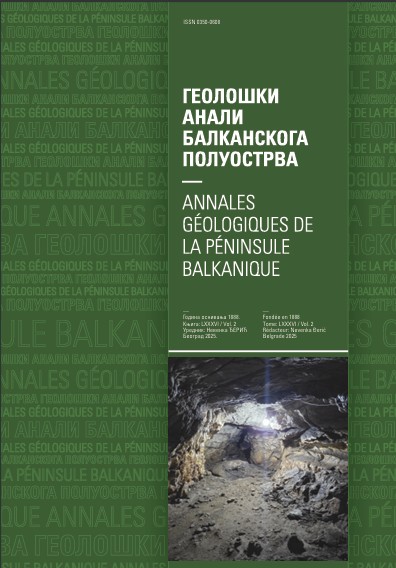Tektonsko-paleografsko-stratigrafski ciklusi u Tercijaru Srbije
Tertiary Tectonic-Paleogeographic—Stratigraphic Cycles of Serbia
Abstract
Within the Tertiary of Serbia, thirteen paleogeographic-stratigraphic cycles have been separated between two tectonic stages. Each cycle began with deposition of clastic beds overlain by mail-clayey rock or limestone beds. Where the freshwater and paralic environnients were suitable, a third cycle member was formed – coal beds which pass laterally and upward into marl-clayey rocks. The cycles evolved through folding, thnisting and rising into the Second Savian phase, and faulting and up- and down-throwing in the latter half of this stage. The individualized cycles are the following: First Lower Paleocene, caused by Laramian orogeny; Upper Eocene, between Illyrian and Pyreneean orogenies; Lower Oligocene, between Pireneean and Helvetian; Upper Oligocene, between Helvetian and First Savian; Egerian, between Second First and Second Savian; Eggenburgian- Ottnangian, between Second Savian and First Styrian; Carpathian, between First and Second Styrian; Lower Badenian, between Seeond Styrian and Moldavian, Upper Badenian between Moldavian and First Attican; Sarmatian, between First and Second Attican; Pannonian, between Rhodanian and Slavonian; and Dacian-Romanian movements of the Slavonian phase.
Copyright (c) 2024 Geološki anali Balkanskoga poluostrva

This work is licensed under a Creative Commons Attribution 4.0 International License.










